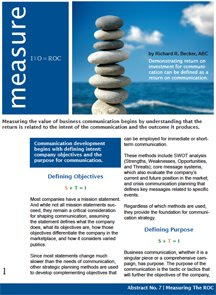
Almost one year ago, two companies set out to differentiate themselves from other job search sites within the same niche: TheLadders and RiseSmart. Each wanted to dominate a subscription-based job site niche that focuses on jobs starting at $100k.
However, with the economic downturn, pursuing qualified employers or qualified candidates in a race toward a shrinking middle seemed increasingly futile. As TheLadders entrenched itself in offering employer-driven job search resources, RiseSmart set out to find a bigger court by adding outplacement to its core services.
Play From A Bigger Court To Win A Niche?
"Traditional outplacement services have simply become too expensive in the minds of many companies," Sanjay Sathe, founder and CEO of RiseSmart, said in a release. "Employers are frustrated with these services, because they cost a lot but typically don't demonstrate measurable results for employees. During a time of financial pressures, they've become a target of budget cuts."
The move makes sense. Whereas outplacement consulting firms represent a $3 billion industry to provide transitioned employees with career counseling, RiseSmart expanded its business model to include outplacement services that directly targets employers without giving up its candidate-focused service. For RiseSmart, it establishes a beachhead in the outplacement industry and nurtures employer relationships when the economy eventually reverses course.
The move benefits employers too. Rather than funneling employees to outsource companies that sometimes emphasize new careers, RiseSmart clients are directing laid off employees to a service that finds them jobs. If job placement can be expedited, former employees who have relationships with coworkers at the their former company boost morale despite layoffs.
Outplacement Services Can Improve Employee Relationships.
"Businesses sometimes forget that employees who are laid off are still part of the internal culture," one human resource executive, who recently managed several hundred layoffs, told me. "Just because they pack up their desks doesn't mean they break off all the relationships they made while working at a company. The morale of former employees and their ability to secure new jobs directly impacts the employees that remain."
While it's not formal communication, the message resonates with internal audiences. It shifts the focus from internal rumors back toward satisfying customers because employees know even if they are laid off, there is a plan to place them. Providing a sense of security may be critical during economic uncertainty.
Companies that do not provide a sense of security may jeopardize their own future. While the recession has temporarily lowered employee turnover, as many as 40 percent of employees at companies mishandling layoffs could seek new employment when the economy improves. High turnover rates typically cost between 150 to 250 percent of an employee's annual salary, with high-performing employees being among the first to go.
Relationships In Bad Times Create Opportunities In Good Times.
RiseSmart might not be the largest subscription-based job site that focuses on jobs starting at $100k, but it is playing smart. If it continues to cater to qualified candidates while developing relationships with employers during an economic downturn, it may overtake some middle ground as the economy improves. The move positions the company as a link.
Contrary, TheLadders added 400 new companies and recruiters in the fourth quarter, reinforcing its employer model. The number of candidates hoping to secure these jobs spiked 63 percent last year. The move positions the company as a middleman.
In reality, both companies are still battling for premium position in a niche market. RiseSmart may have expanded its court, but it still pokes fun at the competition. Recently, RiseSmart pointed out that as clever as the commercials from CareerBuilder, Monster, and TheLadders can be, none of them reinforce human side of job placement.
Other Voices Taking Note Of The Extended Matchup.
Mashable: RiseSmart is Job Hunting for Lazy, Laid-off Execs
Cheesehead: RiseSmart Gets $3 Million In Funding
AlarmClock: High End Job Search Site RiseSmart Raises $3M




















